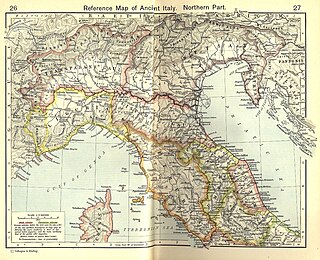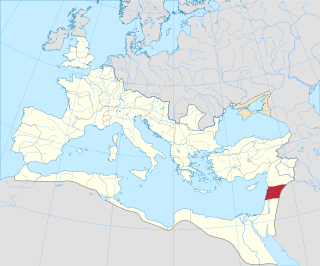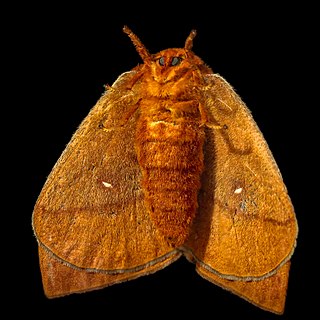Consul was the title of one of the two chief magistrates of the Roman Republic, and subsequently also an important title under the Roman Empire. The title was used in other European city-states through antiquity and the Middle Ages, in particular in the Republics of Genoa and Pisa, then revived in modern states, notably in the First French Republic. The related adjective is consular, from the Latin consularis.
A military tribune was an officer of the Roman army who ranked below the legate and above the centurion. Young men of Equestrian rank often served as military tribune as a stepping stone to the Senate. The tribunus militum should not be confused with the elected political office of tribune of the people nor with that of tribunus militum consulari potestate.

A consular tribune was putatively a type of magistrate in the early Roman Republic. According to Roman tradition, colleges of consular tribunes held office throughout the fifth and fourth centuries BC during the so-called "Conflict of the Orders". The ancient historian Livy offered two explanations: the Roman state could have needed more magistrates to support its military endeavours; alternatively, the consular tribunate was offered in lieu of the ordinary consulship to plebeians so to maintain a patrician lock on the consulship.
Consularis is a Latin adjective indicating something pertaining to the position or rank of consul. In Ancient Rome it was also used as a noun to designate those senators who had held the office of consul or attained consular rank as a special honour. In Late Antiquity, the title became also a gubernatorial rank for provincial governors.
Promona was an ancient city inhabited by the Illyrians. Promona was the location a Roman cohort in the territory of the Delmatae. The location is the modern-day village of Tepljuh, north of Drnis.
Andetrium(Albanian: anë deti) meaning seaside, was an ancient city in Illyria, located in modern day Muć or Gornji Muć in the interior of Dalmatia, Croatia.
Ptiladarcha is a genus of moths of the family Crambidae. It contains only one species, Ptiladarcha consularis, which is found in Fiji.

Syria I or Syria Prima was a Byzantine province, formed c. 415 out of Syria Coele. The province survived until the Muslim conquest of Syria in the 630s.

Tilurium was an Illyrian fortified settlement of the Delmatae. Tilurium was the location a Roman cohort in the territory of the Delmatae. The site is now located on the hill of Gardun near Trilj.

Liguria was a late Roman province in Italy in the 4th–6th centuries. Despite its name, it encompassed most of the modern Italian region of Piedmont and parts of Lombardy, but not the medieval and modern region of Liguria, which was included in the province of Alpes Cottiae. The province's capital was Mediolanum (Milan) and it was governed by an official of consularis rank. Administratively, it was subject to the Diocese of Annonarian Italy and to the praetorian prefecture of Italy.
Lucius Aradius Valerius ProculussignoPopulonius was a senator and a politician of the Roman Empire, twice praefectus urbi of Rome and once consul.

Phoenice was a province of the Roman Empire, encompassing the historical region of Phoenicia. It was officially created in 194 AD and after c. 392, Phoenice Syria was divided into Phoenice proper or Phoenice Paralia, and Phoenice Libanensis, a division that persisted until the region was conquered by the Muslim Arabs in the 630s.

Pterolophia is a genus of longhorn beetles of the subfamily Lamiinae, containing the following species:
Pterolophia undulata is a species of beetle in the family Cerambycidae. It was described by Francis Polkinghorne Pascoe in 1862. It is known from Moluccas.
Pterolophia instabilis is a species of beetle in the family Cerambycidae. It was described by Per Olof Christopher Aurivillius in 1922. It is known from Seychelles.
Pterolophia angulata is a species of beetle in the family Cerambycidae. It was described by Hermann Julius Kolbe in 1893. It has a wide distribution in Africa. It feeds on Lagerstroemia indica.
Pterolophia guineensis is a species of beetle in the family Cerambycidae. It was described by James Thomson in 1864, originally under the genus Alyattes.
Buprestis consularis is a species of metallic wood-boring beetle in the family Buprestidae. It is found in North America.

Anisota consularis, the Florida oakworm moth or consular oakworm moth, is a moth in the family Saturniidae. The species was first described by Harrison Gray Dyar Jr. in 1896. It is found in North America.






